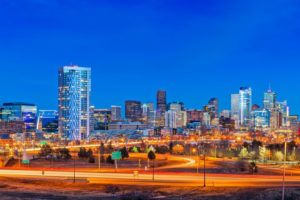Top 5 Places to Visit in Denver Colorado

If you’re planning to spend a weekend in Denver, Colorado, there are a lot of fun things to do. The city offers great museums, shopping, and nightlife, not to mention its gorgeous scenery. This cosmopolitan city is blessed with 300 days of sunshine per year. Those who are interested in American history and culture should visit the History Colorado Center, located in the city’s center. This museum features exhibits that are interactive and tell the story of the American West.
Denver Art Museum
The Denver Art Museum is an encyclopedic collection of more than 70,000 diverse works of art. It’s the largest art museum between the West Coast and Chicago. It’s definitely worth a visit if you’re in town for a few days.
If you’re in town for business or pleasure, you can spend a day exploring the city’s museums. Denver has a variety of interesting museums from history to fine art. Some of them are well-known, while others are more obscure. Some of the more popular museums in Denver are the Denver Art Museum, the Denver Air and Space Museum, and the Molly Brown House Museum.
The Denver Art Museum was founded in 1893 and is located in the Civic Center. It is a 350,000-square-foot museum housed in two buildings. The north building, which opened in 1971, has seven stories and is covered with a halo of shimmering gray tiles. The museum is also home to the recently opened Frederic C. Hamilton Wing, which connects to the North Building.
Denver Performing Arts Complex
The Denver Performing Arts Complex is one of the city’s top attractions, and the museum has a variety of permanent and temporary exhibits that cover everything from nature to outer space. It’s a popular place to visit during a rainy day and is ideal for families.
The Denver Art Museum opened in 1893 and has an extensive collection of art. It showcases artwork from the ancient Americas to contemporary masterpieces and has a history of preserving historical pieces. It’s located in the Civic Center and is spread over several floors and buildings. It contains one of the largest collections in the USA.
The Denver Performing Arts Complex is the largest performing arts complex in the United States, with ten theaters and over ten thousand seats. The complex is connected by an 80-foot glass roof and is considered one of the country’s premier entertainment venues. It’s home to the Colorado Symphony Orchestra, as well as a wide variety of musical, opera, and cabaret productions.
Denver Zoo
One of the top places to visit in Denver Colorado is the Denver Zoo, home to over 4000 different species. It is the fourth-largest zoo in the country and has exhibits relating to all kinds of mammals, reptiles, fish, birds, and plants.
The Denver Zoo is known for its unique and beautiful environments. Guests can walk around the zoo and get a glimpse of many of the world’s greatest animals, including giraffes, emus, and a breeding herd of Przewalski’s horses. It’s a fascinating experience to observe these creatures in their natural habitat and learn more about them.
Another great place to visit with children is the Children’s Museum of Denver, located on Marsico Campus. The museum features hands-on activities that encourage kids to discover the world around them. It also houses an interactive children’s playscape. The museum is also home to an Imax theater, where visitors can watch films about the natural world.
Denver State Capitol Building
If you’re planning a trip to Denver Colorado, the State Capitol Building should be on your list of places to see. Originally constructed of copper, the building was eventually coated with gold leaf, a symbol of the state’s gold rush days. This was done three times between 1908 and 1980, resulting in three different shades of gold on the building. In 2013, a new layer of gold leaf was applied to the building, adding a shiny new look to the Colorado State Capitol Building.
If you are looking for a day out, the Lower Downtown District (LoDo) is an ideal place to start. This area spans from Commons Park to the 16th Street Mall, and features hundreds of shops and restaurants. During the holidays, Larimer Square is decked out in holiday lights. You can take a horse-drawn carriage ride along the mall, or enjoy a walk through the twinkling lights at night.
Union Station
If you are planning a trip to Colorado, you may want to spend some time exploring the city’s iconic Union Station. Built in the beaux-arts style, the station is one of Denver’s most important transportation hubs. It’s also the site of concerts and a weekly farmers’ market.
In addition to the station, you should also check out the Denver Fire Museum, which was opened in 1866. This museum exhibits artifacts that were used to fight fires and educate visitors on how to prevent them. There are also educational exhibits and programs for the whole family.
If you are traveling by train, Union Station is a great place to stop and relax. The stations have a warm, cozy vibe. It is not as large as other train stations, but the facilities are clean and welcoming. You can get a nice drink or a bite to eat at one of the several restaurants and bars in the station. There are also many Denver tours that feature Union Station.

